Introduction to the Four Gospels
by Judy Jeschke
New Testament scholars generally agree that the proclamation of the “Good News of Jesus” can be documented in all the apostolic preaching from Peter’s Pentecost sermon onward, and that all four Gospels follow this same outline which is presented in the following points:
1) God’s promises made to God’s people in the Old Testament are fulfilled in Jesus
2) The Chosen One of God (Messiah and Christ), born in King David’s line, has come.
3) He is Jesus of Nazareth, who was a profound teacher proclaiming God’s present and coming rule and reign and whose ministry was filled with signs and wonders; was crucified by his own determination and in accord with God’s purposes; raised from the dead by God the Father; and ascended into heaven to be seated at God’s right hand.
4) Jesus will come again, as God without disguise, and execute the final judgement.
5) Therefore, let everyone who hears this message repent, be baptized for the forgiveness of sin, receive new life, and be filled with the Holy Spirit. This will enable God’s people to live out their calling and mission through God’s strength, not their own.
Beyond these fundamental, shared truths, many similarities among the Gospels could be pointed out, not the least of which is the word-for-word agreement of a large portion of the Synoptics. Perhaps this is to be expected given they center around the same historical events and the same Person. Nevertheless, there are differences – differences between the Synoptics and John, as well as between the Synoptics themselves. We could discuss these differences at great length, but that would not suit our present purposes. If there was total agreement in every detail, chances are we would be encountering a story that was made-up and agreed upon beforehand. When there is a center to the facts of the story, despite differing details, we are getting to the truth of the matter.
We seek the variety of general impressions which are made by each author. We see the influence of Jesus’ life and teachings in John’s Gospel; many came to faith, some rejected him and some wanted to kill him. Matthew reveals to us the mind of Jesus, primarily through his teachings, which make up the bulk of that Gospel’s content. Luke tells us a great deal about Jesus’ emotions, prayer life, and attitudes toward people that the society disregarded. Jesus has tremendous empathy and sympathy in Luke’s Gospel, and as Luke and the Acts of the Apostles originate as a single volume, Luke regards Jesus as a perfectly Spirit-filled human being, and those who follow him can do the works he did, empowered by the Holy Spirit. Mark’s Jesus is pictured as an action figure, with authority over creation, evil and human disease. They all create a picture of the same Jesus, but they are viewing him with different emphasis in mind.
The other vivid contrasts of these four writings is how they primarily portray Jesus. In Matthew, Jesus is a great teacher and clearly fulfills the prophesies as “King of the Jews”. Mark’s Gospel tells the story of the strong Son of God, who chose to fulfill the role of the Suffering Servant from Isaiah. Luke writes of what a friend we have in Jesus, the Great Physician that can cure our every ill. And John creates a portrait of Jesus who existed before time and space and enters into our humanity to give us “the life of the Eternal”.
We start with the Gospels because it is the life and teachings of Jesus that are the foundation for understanding God’s Word, who is Jesus, and which becomes the written word in Scripture. Jesus clearly states that his is the One in whom our faith must center, not the Scriptures. The “authority of the Scripture” is based on the One to whom the Scriptures point, Jesus, the “Word made flesh”. This becomes the basis of all our Bible Study.
We study the Bible, not to be more “biblically literate”, but to better know our Lord, Savior, and Friend, Jesus Christ. The building blocks for interpreting the New Testament are:
First: The life and teachings of Jesus
Second: Apostolic teaching and preaching
Third: History and practice of the Church
Forth: Apocalyptic Literature


